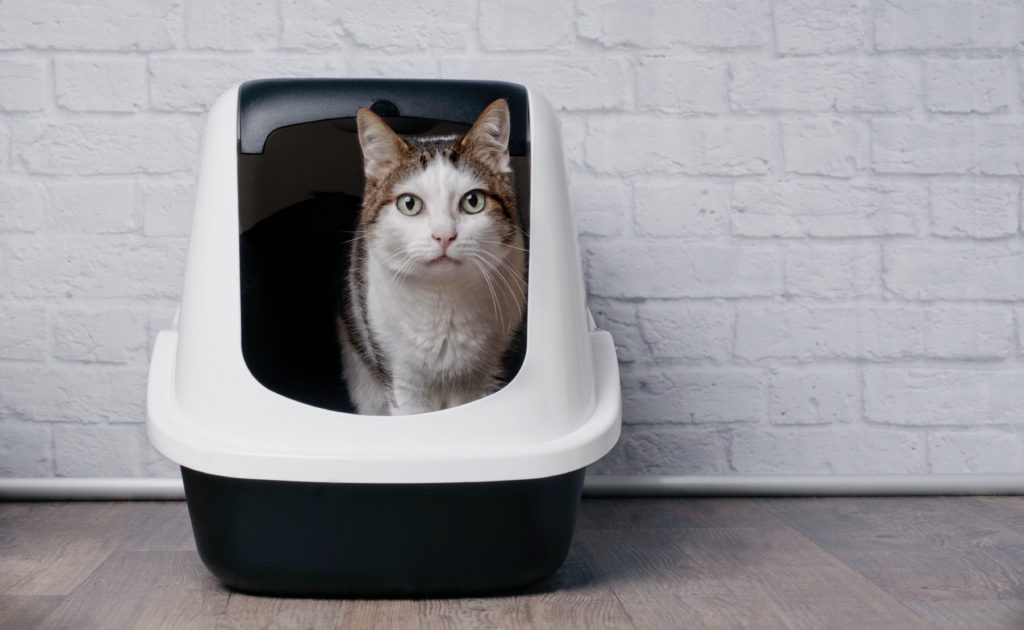Bacteria and parasites thrive in dirty litter boxes, not only do they thrive but it’s an ideal environment for breeding. A responsible pet parent scoops their cat’s litter box at least once a day. Just as we don’t want to use a clogged toilet that’s filled to the brim with human waste, your cat doesn’t want to step into a dirty litter box. If their litter box is not clean your cat may attempt to hold it in, which can be bad for your cat’s kidneys and bladder. This can lead to bladder infections, urinary tract infections, and kidney problems. Due to the pain that comes with that array of infections your cat may resort to relieving themselves everywhere but the litter box. Even if your cat doesn’t hold in their waste, most cats tend to squat when they use the litter box, if any fecal matter gets near or on their urethra, this can also lead to a painful infection. Dirty litter boxes are full of bacteria that are not only harmful to cats but to humans as well. Here are a few parasites that could be crawling in your cat’s litterbox.
Affiliate Disclaimer: This post may contain affiliate links and we may earn a small commission when you click on the links at no additional cost to you so we can continue to provide you with helpful tips and tricks. As an Amazon Affiliate we earn from qualifying purchases. Thank you for supporting our small business.
Campylobacteriosis: According to the CDC (content source: click here for more information),” People get Campylobacter infection by coming into contact with feces (poop) of infected animals, including cats, or by consuming contaminated food or water. Typically, Campylobacter is spread when people don’t wash their hands after touching animals or their food, poop, toys, or beds, but it can also sometimes infect you through an open wound. Cats commonly become infected by eating contaminated raw meat and shed the bacteria in their poop.” Symptoms appear within 2-5 days and will last for about a week. You will know if you contracted this if you are experiencing bloody diarrhea, vomiting, and stomach cramps.
Toxoplasmosis: According to the CDC (content source: click here for more general FAQS), “Accidentally swallowing the parasite through contact with cat feces that contain Toxoplasma. This might happen by cleaning a cat’s litter box when the cat has shed Toxoplasma in its feces; touching or ingesting anything that has come into contact with cat feces that contain Toxoplasma; or accidentally ingesting contaminated soil (e.g., not washing hands after gardening or eating unwashed fruits or vegetables from a garden).” If infected cats will shed cysts in their stool for a few weeks. This can be dangerous for people cleaning the cat’s litter box. Children, pregnant women, and individuals with severely compromised immune systems are more at risk when contracting Toxoplasmosis. This bacteria can cause flu-like symptoms with swollen lymph nodes, seizures, and blurred vision. It can also cause birth defects.
Roundworms: “Toxocariasis is an infection transmitted from animals to humans (zoonosis) caused by the parasitic roundworms commonly found in the intestine of dogs (Toxocara Canis) and cats (T. cati).” (content source: CDC click here for more information). This parasite can live in their intestines for a while and their eggs end up in your pet’s poop. If you accidentally touch the poop while scooping your cat’s litter box and you forget to wash your hands you will become their new host! Roundworm larvae can migrate to your eyes, your retina can get damaged, and some people have actually gone blind from exposure to Roundworms. The larvae can also end up in your major organs, causing painful symptoms.
What Can I Do To Keep My Cat Safe?
Make sure to practice proper hygiene, even if you use a scooper, you should always thoroughly wash your hands with soap and water afterward. Make sure to dispose of the waste properly. I personally used to own a Litter Genie XL before I got a self-cleaning box. The Litter Genie was created by the makers of Diaper Genie. All you have to do is scoop the pet waste, open the lid and drop the clumps, and pull the handle to lock it in. The refills last up to 8 weeks with the XL model and the pale itself holds up to 21-days of cat litter.
If you like saving money in the long run and staying healthy then the Litter-Robot 3 could be a great investment. The Litter-Robot sifts waste within minutes of your cat exiting the unit, separating the waste from the litter. This process reduces those pesky feline odors and removes potentially bacteria-ridden feces without you having to get near the unit. So how does the Litter-Robot save you money? The sifting process removes the clumps and preserves the litter. According to the creators of the Litter-Robot “Litter-Robot customers report reducing litter usage by up to 50% annually, compared to traditional and other automated litter boxes.“ Overtime these units pay for themselves. They have amazing customer service, so if you have any difficulties they will assist you in fixing the issue right away.
The Litter-Robot is Wi-Fi enabled. “The AutoPets Connect app allows you to see recent usage history for insights into your cat’s health.”-Litter Genie. If they are entering the Litter-Robot too frequently that could be an indication of a urinary tract infection which means you may need to visit the vet. It also lets you know if the box itself is full. Being a pet sitter I have worked with a lot of clients that own Litter-Robots. With the older models, if the unit malfunctioned while you were away, you couldn’t do anything about it until you or your sitter manually pressed “cycle” which resets the unit. With the newer model, you can troubleshoot your unit from your phone and cycle it when necessary.
If you enjoyed this post check out How To Hide Your Litter Box In Plain View

